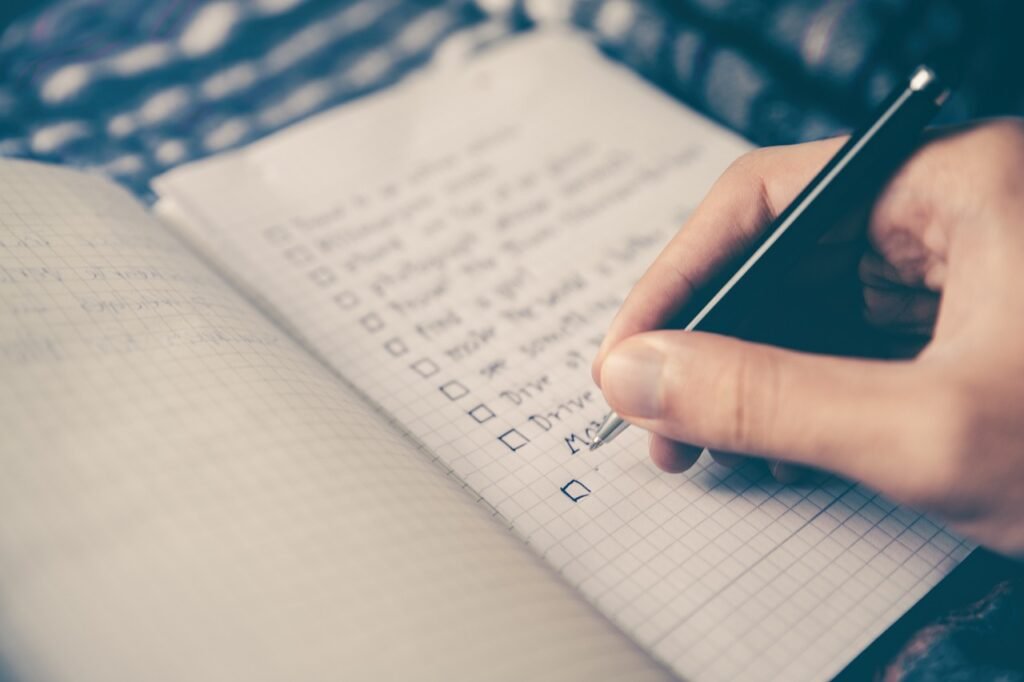
If you have ADHD, the end of the day can feel like anything but an ending. You might walk away from your work with a dozen tabs still open—both on your computer and in your head. Your brain keeps spinning, replaying what didn’t get done, and trying to remember what’s supposed to happen tomorrow.
This is where a simple practice called “closing the loop” comes in—and it’s one of the most helpful ADHD productivity tips I’ve found.
What Does “Closing the Loop” Mean?
“Closing the loop” is a way of creating psychological closure for unfinished thoughts, tasks, or decisions. For ADHD brains, which often struggle with working memory, mental organization, and task completion, this kind of intentional wrap-up can reduce stress and free up mental bandwidth.
The concept draws from the Zeigarnik Effect, a psychological phenomenon first identified in the 1920s. It describes how our brains tend to fixate on incomplete tasks more than completed ones. This is especially intense for people with ADHD, who already experience a higher baseline of cognitive load due to executive function challenges.
When you take a moment to intentionally name what’s left open, your brain is more likely to let go of it—because it knows you’ve saved it somewhere. You’re not just ending your day. You’re telling your brain it’s safe to stop thinking about it.
Why It Works for ADHD Brains
People with ADHD often struggle with task-switching and closure, two core areas impacted by executive dysfunction. When we leave tasks unresolved—mentally or physically—it creates internal friction. We might not even realize it, but our nervous system stays alert, constantly trying to hold onto details so we don’t forget them.
Neuroscience research shows that people with ADHD experience more mental fatigue and slower recovery from task switching because of differences in dopamine regulation and prefrontal cortex activation (Barkley, 2010; Brown, 2005). This makes transitions harder—and ending the day becomes one more transition we often skip.
By closing the loop with a short, structured routine, you’re essentially creating an external executive function system. You’re not relying on your brain to keep track of everything—you’re offloading it into a visible, tangible form. Psychologists call this “cognitive offloading”, and it’s been shown to improve recall, reduce mental fatigue, and help people with ADHD and working memory deficits operate more efficiently (Risko & Gilbert, 2016).
The result? Your brain can finally downshift. You’re not lying in bed rehashing the day or scrambling in the morning to figure out what to do next. You’ve already laid the path for Future You.
A Simple ADHD-Friendly End-of-Day Routine
You don’t need a fancy planner or an app. Just five minutes and a pen (or notes app) will do:
1. Look back at the day.
Name what you got done. Even small wins matter. ADHD brains often skip the part where we acknowledge progress—and that can mess with motivation.
2. Dump your mental tabs.
Write down anything you’re still holding onto: tasks, ideas, reminders, or things you didn’t finish. This is ADHD brain organization 101—get it out of your head and into a system you trust.
3. Pick your top 1–3 priorities for tomorrow.
ADHD brains freeze when there are too many options. Keep it simple: What are the most important or easiest things to start with?
4. End with a physical cue.
Close your laptop. Turn off the light. Say “done.” A small ritual helps your brain shift out of work mode and into rest.
You’re Not Failing—You Just Need a System That Works for Your Brain
ADHD work habits don’t have to look like everyone else’s. You don’t need more pressure. You need a little more support. Closing the loop is one way to give your brain the closure it’s craving.
Try it tonight. Set a timer for 5 minutes. Write down your loose ends, pick a few things for tomorrow, and let that be enough.
